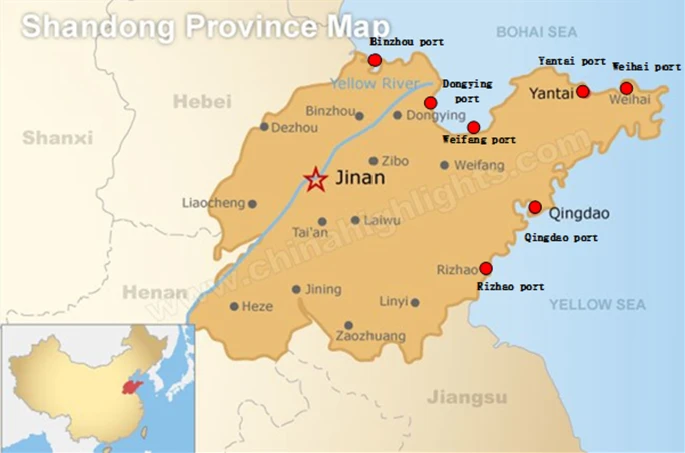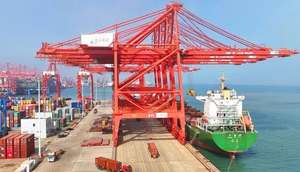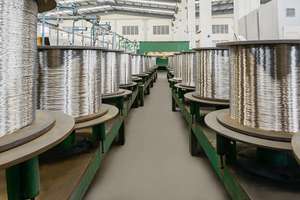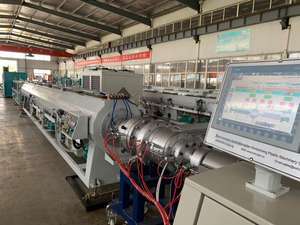
Shandong's Foreign Trade & Investment Strategies: An Overview
Shandong Province, as one of China's key economic provinces, has always placed great emphasis on the development of its foreign trade. In recent years, the provincial government has introduced a series of policies aimed at promoting stable growth and optimizing the structure of foreign trade, as well as attracting and utilizing foreign investment with greater intensity. This article will delve into the policies of Shandong Province regarding exports and the attraction of foreign procurement, and analyze the potential impact of these policies on local economic development.
Firstly, the Shandong provincial government focuses on expanding the export scale of key products and key markets. The government organizes export potential enterprises of new energy vehicles, lithium batteries, photovoltaics, and other products to carry out brand promotion, display sales, and after-sales services through "front exhibition and back warehouse", and formulates international market development plans tailored to each enterprise. In addition, Shandong promotes the establishment of branches and retail outlets for advantage industries such as complete vehicle and rubber tire enterprises in markets like ASEAN, SCO countries, and the Middle East, to improve international marketing channels.
Secondly, Shandong accelerates the import of bulk commodities and advanced technological equipment. The government has established a catalog encouraging the import of bulk resource products and improved the comprehensive service system for the supply chain to ensure market demand. At the same time, the government is building an international mineral product bonded blending and distribution center, promoting the "unload and blend at the same time" and "multi-country, multi-ore" supervision model, and expanding the import scale of bonded blending mineral products.
In supporting enterprises to expand markets and stabilize shares, Shandong implements the "One Hundred Exhibitions" market development plan abroad, providing an 80% subsidy for the booth fees of key exhibitions included in the plan, and encourages increased support for emerging markets, countries along the Belt and Road, RCEP countries, mechanical and electrical products, and high-tech product projects. Additionally, the government supports national-level "specialized, refined, and new" and manufacturing single-champion enterprises to participate in key domestic and international exhibitions such as the Canton Fair and the Huaqiao Fair, stabilizing the market share of backbone enterprises and products.
To strengthen trade entities, Shandong utilizes big data platforms to provide enterprises with practical training on target market trends, digital marketing management, and precise buyer targeting, enhancing the ability to secure orders. The government also promotes diversified tax guarantee methods to help enterprises reduce burdens and increase efficiency, and strengthens credit cultivation to encourage more enterprises to become "Authorized Economic Operators" (AEO) recognized by customs.
In promoting the innovative and healthy development of cross-border e-commerce, Shandong innovates and enhances the "cross-border e-commerce + industrial belt" model, increases the introduction of well-known domestic and foreign cross-border e-commerce platforms, sellers, independent stations, service providers, MCN institutions, etc., and supports enterprises in carrying out independent brand registration abroad and international certification. The government encourages local enterprises to build their own overseas independent stations and hatches a group of emerging cross-border e-commerce enterprises, providing support to entities with significant development effects and strong demonstrative and driving effects.
Moreover, Shandong accelerates the digitalization of trade and the development of green trade. The government promotes the digitalization of trade, supporting enterprises to create cloud factories, cloud exhibitions, cloud live broadcasts, and cloud negotiations through virtual reality, accelerating the digital empowerment of the entire trade chain. At the same time, the province actively develops green trade, increasing the allocation of green electricity resources to key foreign trade enterprises.
In enhancing the policy effect of the departure port tax rebate pilot, Shandong takes advantage of the opportunity of Binzhou, Dongying, Weifang, Yantai, Weihai, Rizhao, and other ports included in the departure port tax rebate pilot, to open up the information interconnection channel between departure ports and departure ports, integrate routes, finance, trade, and other resources, and consolidate and enhance the service advantages of departure ports.
To increase the credit support for imports and exports, Shandong supports the export of advantage industries such as green and low-carbon, mechanical and electrical, and "top ten" industries, and establishes a list of key enterprises for imports from Africa and RCEP member countries, making full use of the import special quota of the Export-Import Bank to expand the import of key materials, advanced technology, and major equipment.
In terms of export credit insurance, Shandong expands the coverage of insurance for small and micro enterprises, comprehensively enhances the scale of risk protection, and optimizes the foreign trade cross-border settlement services. The government formulates a list of potential "first-time users" for cross-border RMB business, expands the scale of the first-time users for exchange rate hedging, and promotes the quality and efficiency of exchange rate hedging services.
Shandong further expands the areas for introducing foreign investment, accelerates the pilot of Qualified Foreign Limited Partners (QFLP), supports direct domestic related investments with overseas RMB raised, and encourages various cities to formulate special incentive policies for the QFLP pilot, establish a QFLP reserve target library, and connect with fund management institutions and equity investors through multiple channels.
In playing the main platform role of development zones in utilizing foreign investment, Shandong deepens the reform of development zone management systems, plays the role of resource element agglomeration, drives more foreign investment projects to settle around leading industries, and leverages the role of platforms such as the Shandong Free Trade Pilot Zone, SCO Demonstration Zone, Jinan New Old Kinetic Energy Conversion Start-up Area, Qingdao West Coast New Area, and Jiqingyan International Investment Promotion Industrial Park, focusing on key industries to increase the intensity of attracting foreign investment.
In summary, through a series of innovative and pragmatic policy measures, the Shandong provincial government has not only promoted the stable growth and structural optimization of foreign trade but also actively attracted and utilized foreign investment, injecting new vitality into local economic development. The implementation of these policies will undoubtedly further enhance Shandong's position in global trade and promote high-quality economic development. As the policy effects gradually emerge, Shandong is expected to become a strong trade province in China and even globally, making a greater contribution to the country's opening up and economic development.













